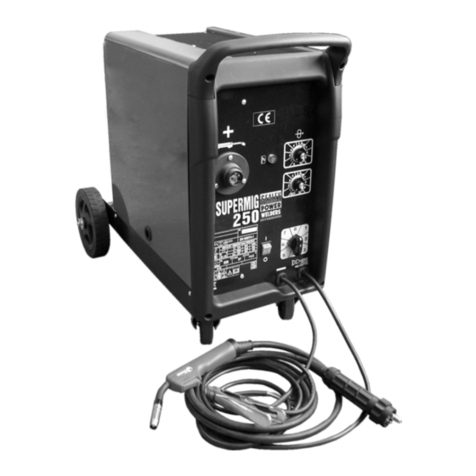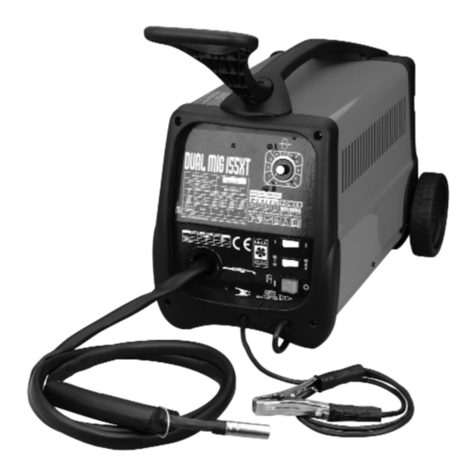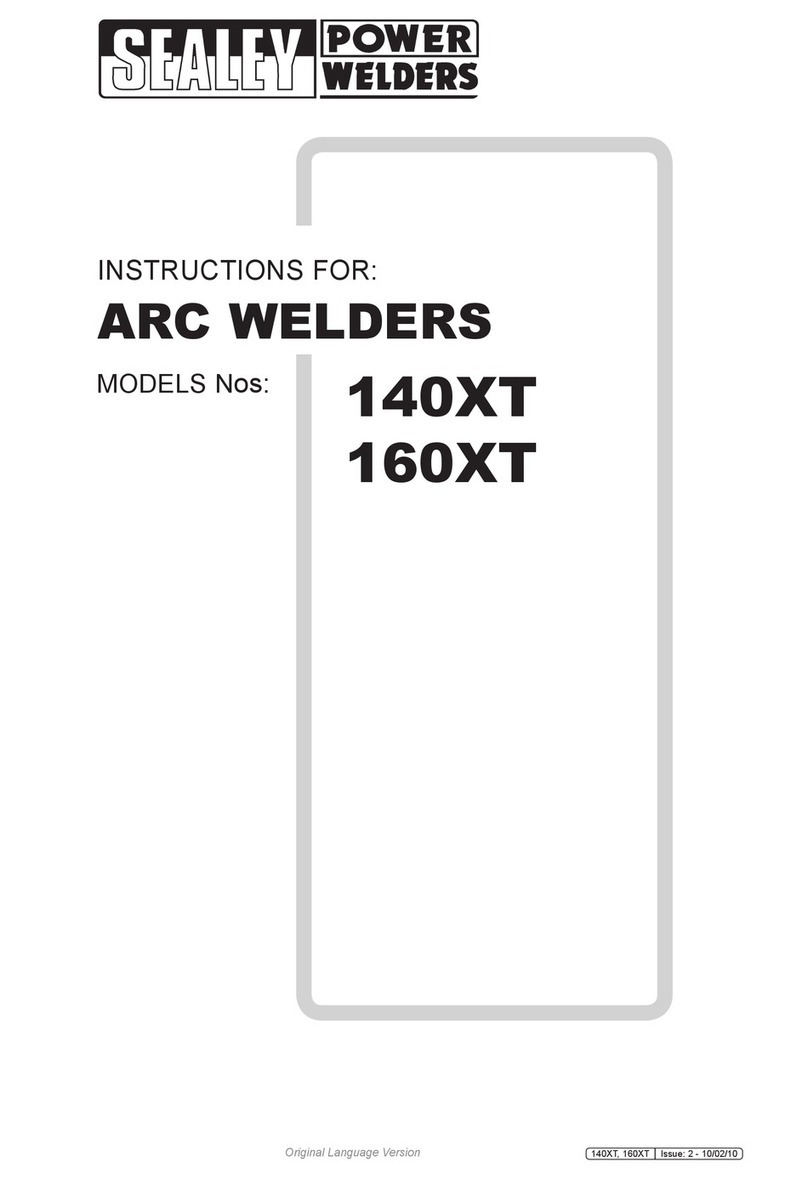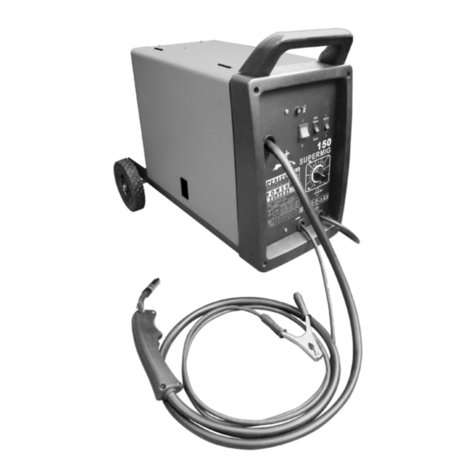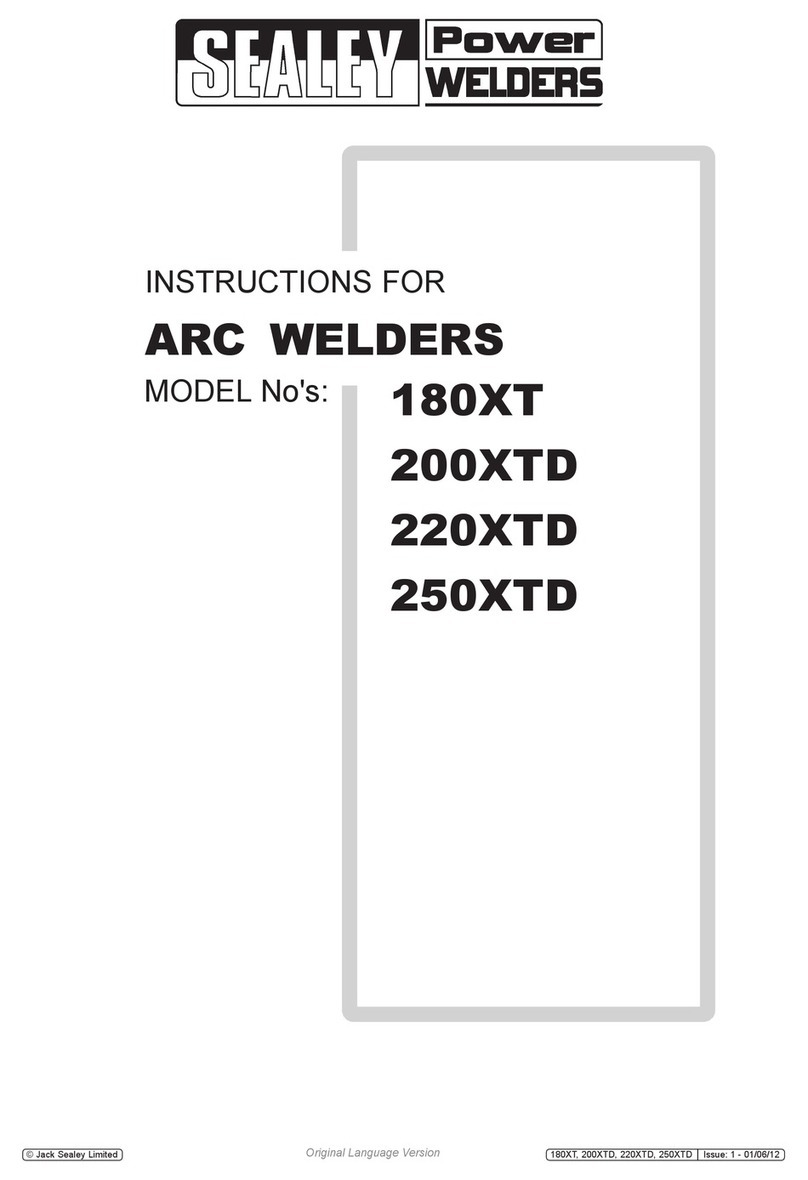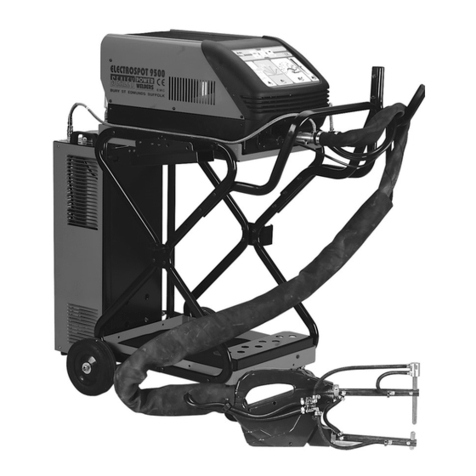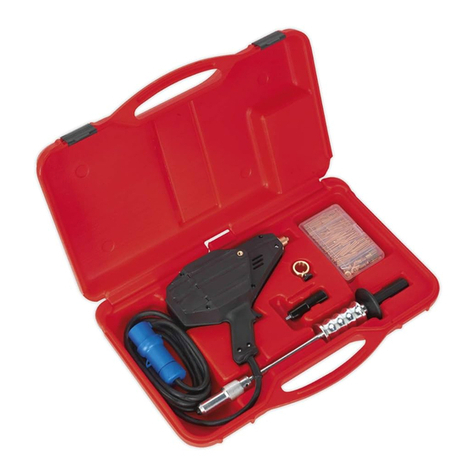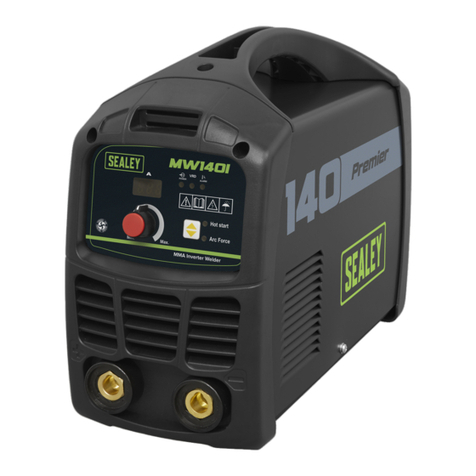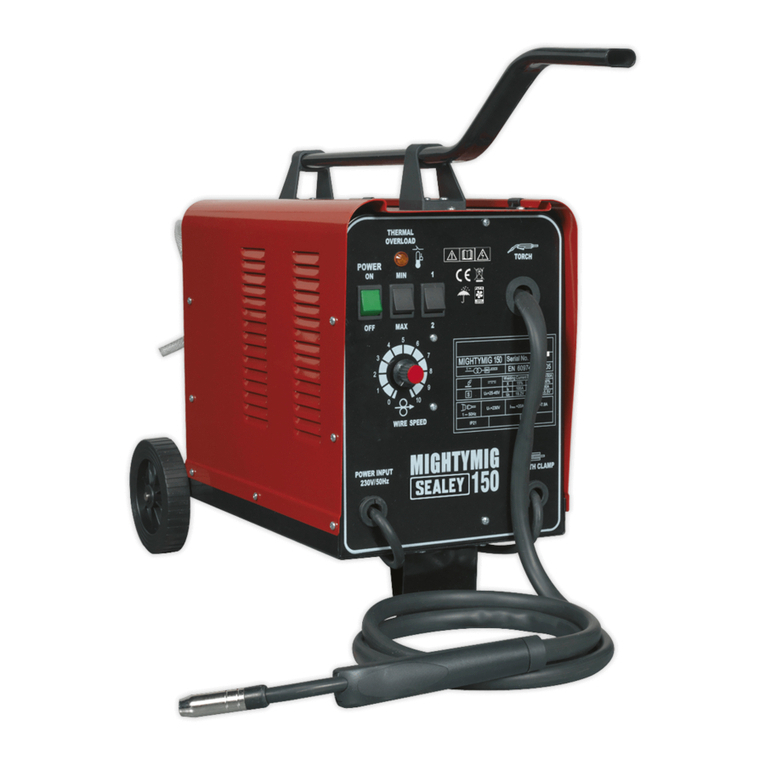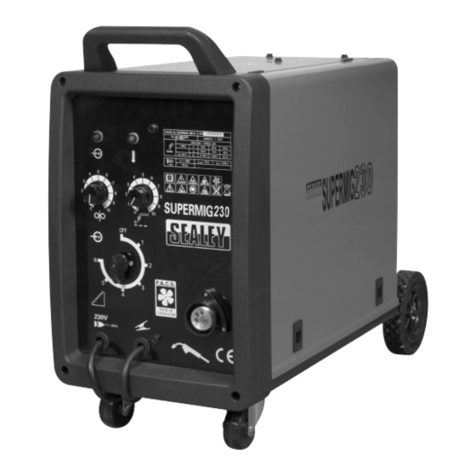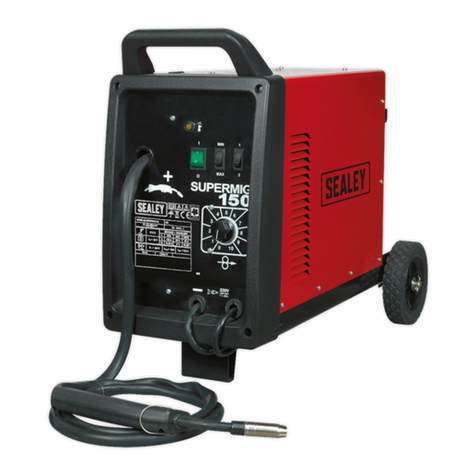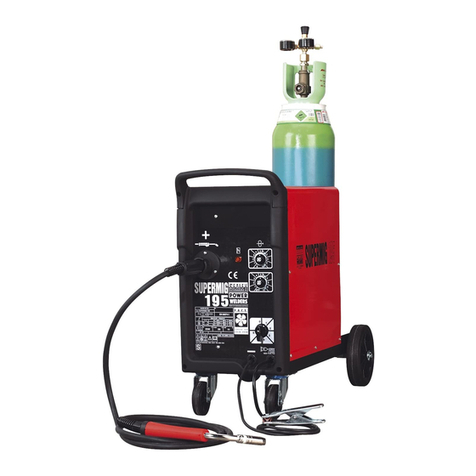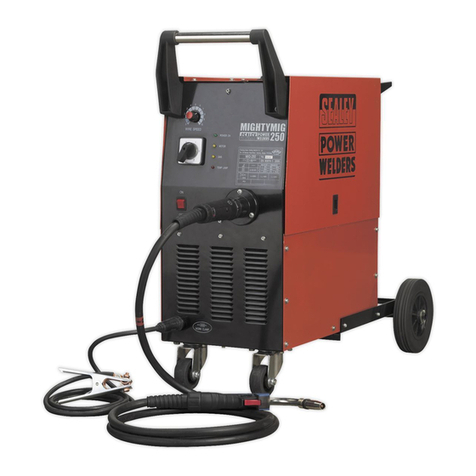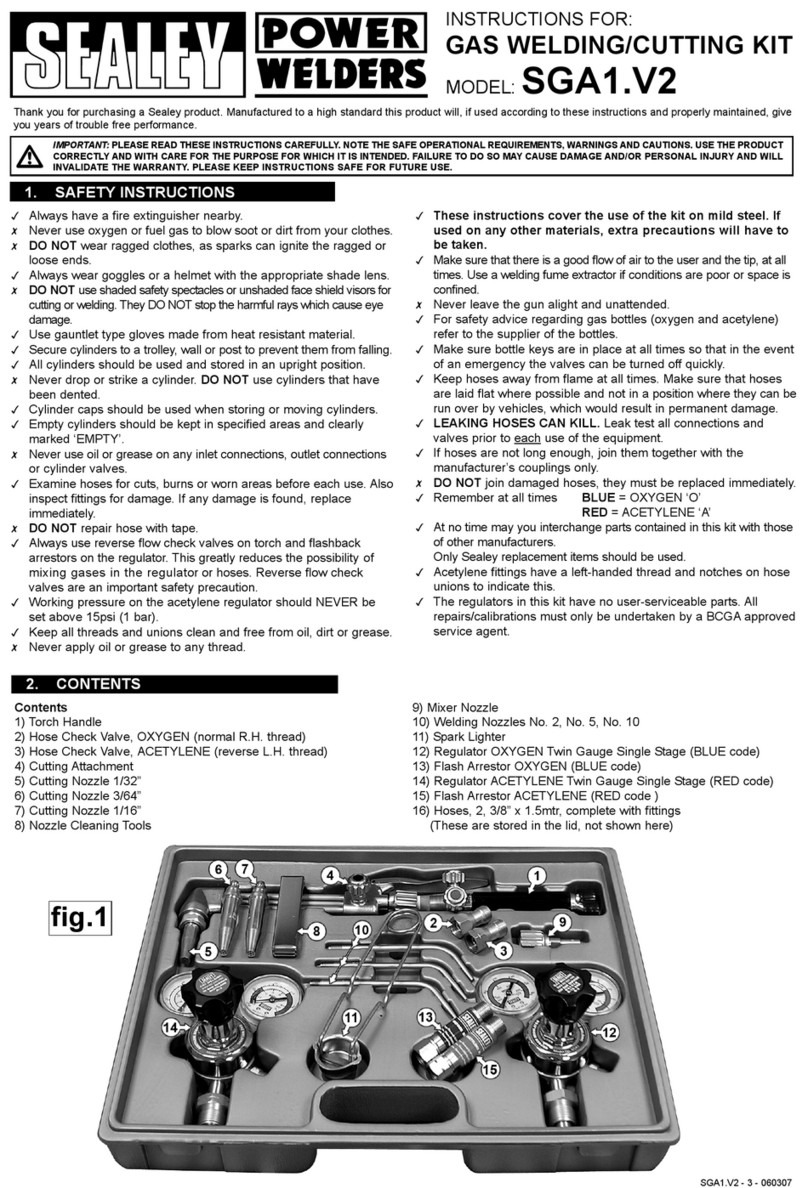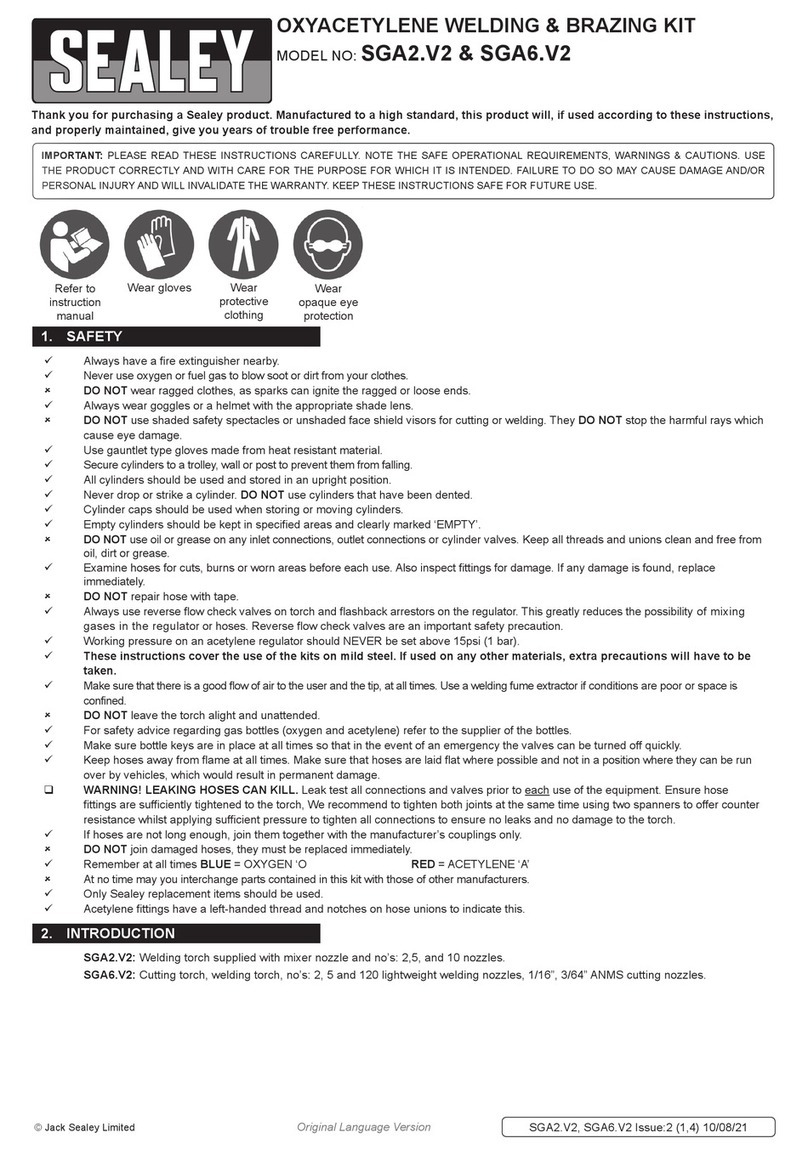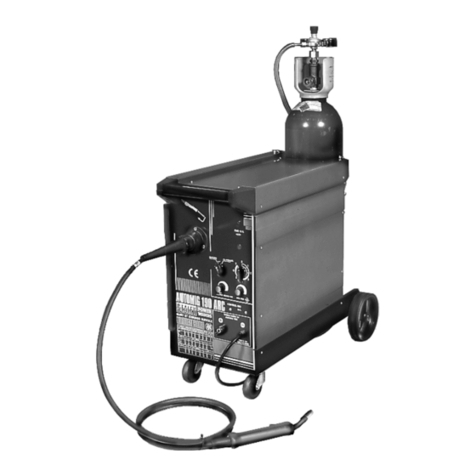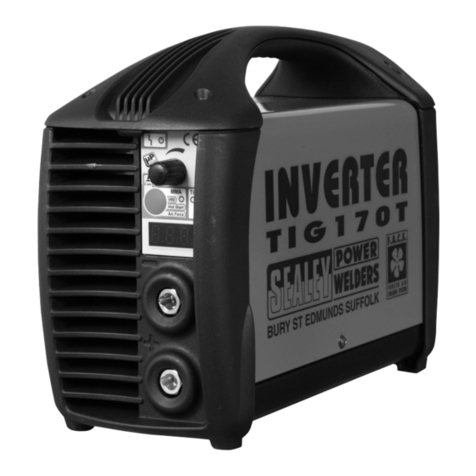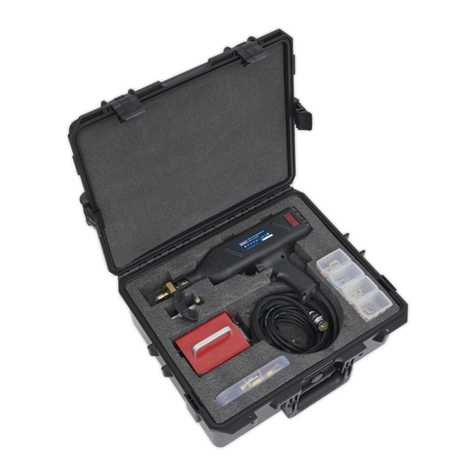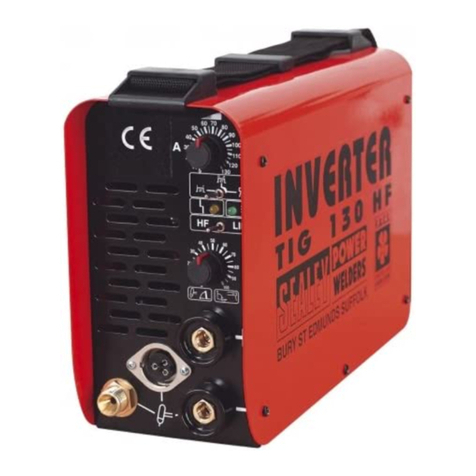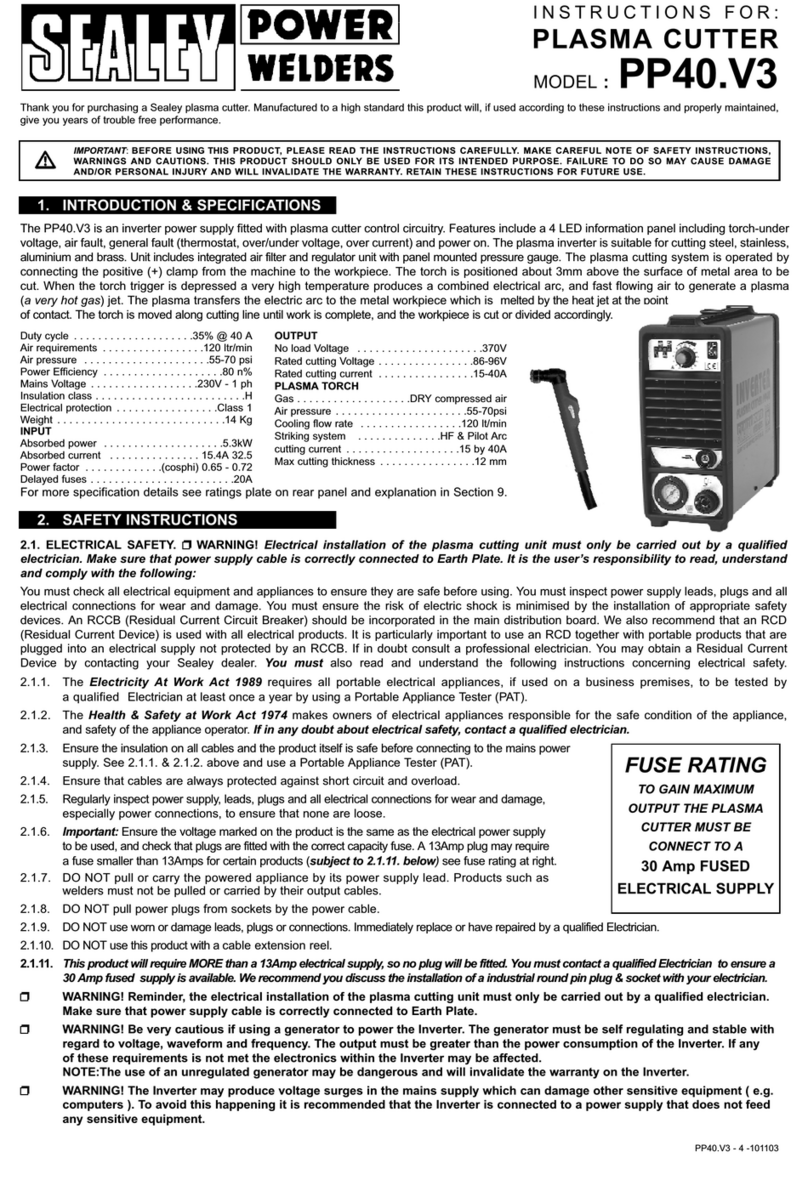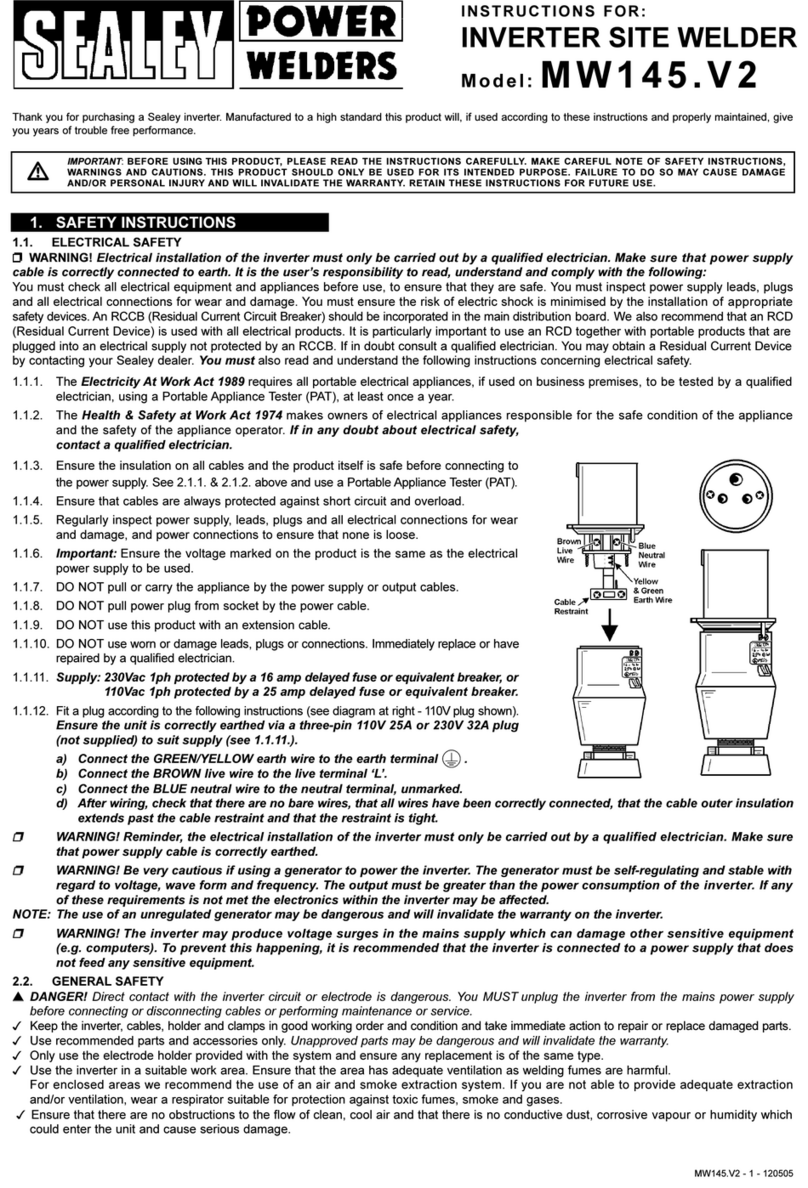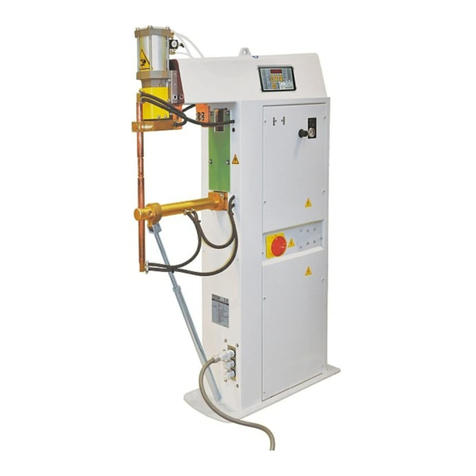
IMPORTANT: PLEASE READ THESE INSTRUCTIONS CAREFULLY. NOTE THE SAFE OPERATIONAL REQUIREMENTS, WARNINGS & CAUTIONS. USE THE PRODUCT
CORRECTLY AND WITH CARE FOR THE PURPOSE FOR WHICH IT IS INTENDED. FAILURE TO DO SO MAY CAUSE DAMAGE AND/OR PERSONAL INJURY AND WILL
INVALIDATE THE WARRANTY. KEEP THESE INSTRUCTIONS SAFE FOR FUTURE USE.
Thank you for purchasing a Sealey product. Manufactured to a high standard, this product will, if used according to these instructions
and maintained properly, give you years of trouble free performance.
Refer to Instruction
Manual
Wear
Eye Protection
Wear
Protective Gloves
Wear
Safety Footwear
Wear
Protective Clothing
1. SAFETY
INSTRUCTIONS FOR:
STUD WELDER WITH SLIDE HAMMER
MODEL No: SR20.V3
1.1. ELECTRICAL SAFETY
WARNING: It is the owner’s responsibility to read, understand and comply with the following:
You must check all electrical equipment and appliances to ensure that they are safe before use. You must inspect power supply leads, plugs and
all electrical connections for wear and damage. You must ensure the risk of electric shock is minimised by the installation of appropriate safety
devices. An RCCB (Residual Current Circuit Breaker) should be incorporated in the main distribution board. We also recommend that an RCD
(Residual Current Device) is used with all electrical products. It is particularly important to use an RCD with portable products that are plugged into
an electrical supply not protected by an RCCB. If in doubt consult a qualified electrician. You may obtain a Residual Current Device by contacting
your Sealey dealer. You must also read and understand the following instructions concerning electrical safety.
1.1.1. The Electricity At Work Act 1989 requires all portable electrical appliances, if used on business premises, to be tested by a qualified
electrician, using a Portable Appliance Tester (PAT) after a suitable period.
1.1.2. The Health & Safety at Work Act 1974 makes owners of electrical appliances responsible for the safe condition of the appliance
and the safety of the appliance operator. If in any doubt about electrical safety, contact a qualified electrician.
1.1.3. Ensure the insulation on all cables and the product itself is safe before connecting to the mains power supply. See 1.1.1. & 1.1.2. above
and use a Portable Appliance Tester (PAT).
1.1.4. Ensure that cables are always protected against short circuit and overload.
1.1.5. Regularly inspect power supply, leads, plugs for wear and damage and all electrical connections
to ensure that none is loose.
1.1.6. Important: Ensure the voltage marked on the product is the same as the electrical power supply
to be used and check that supply is correctly fused, see fuse rating at right.
1.1.7. DO NOT pull or carry the powered appliance by its power supply lead.
1.1.8. DO NOT pull power plugs from sockets by the power cable.
1.1.9. DO NOT use worn or damaged leads, plugs or connections. Immediately replace or have repaired
by a qualified electrician.
1.1.10. This product comes complete with a round pin 16A plug. You must contact a qualified electrician to
ensure a 30 amp supply is available.
If fitting such a plug -
Ensure that the unit is correctly wired and earthed, as follows:
a) Connect the GREEN/YELLOW earth wire to the earth terminal ‘E’.
b) Connect the BROWN live wire to live terminal ‘L’.
c) Connect the BLUE neutral wire to the neutral terminal ‘N’.
d) After wiring, check there are no bare wires, that all wires have been correctly connected, that the cable outer insulation
is clamped by the cable grip and that the grip is tight.
1.1.11. Cable extension reels. When a cable extension reel is used it should be fully unwound before connection. We recommend that a cable
of at least 2.5mm²section is used for this product.
1.2. GENERAL SAFETY
WARNING: Unplug from the mains power supply before performing maintenance or service.
Ensure the welder and all cables are in sound condition and good working order, and keep the copper carrier tight.
Replace or repair damaged parts. Use recommended parts only, unauthorised parts may be dangerous and will invalidate the warranty.
Keep the welder clean for best and safest performance.
Use the welder in a suitable work area. Keep the area clean and tidy and free from unrelated materials. Ensure that there is adequate
lighting.
WARNING! Wear safety goggles, protective clothing, protective footwear and welding gauntlets.
Check you have good ventilation and that air can flow freely around the welder.
Ensure that there are no flammable materials near the work area.
Keep children and unauthorised persons away from the work area.
Remove ill fitting clothing, remove ties, watches, rings, and other loose jewellery and contain long hair.
DANGER! The welder creates magnetic fields that can interfere with watches and such devices. If you have a pacemaker, consult a doctor
before welding or approaching a stud welding area.
DO NOT wear any clothing with metal accessories. Ensure that there are no metallic articles in your pockets.
DO NOT use the welder for any purpose other than that for which it is designed.
DO NOT get the welder wet or use the welder in damp or wet locations.
DANGER! DO NOT weld near flammable materials - solids, liquids or gases.
DO NOT operate the welder while under the influence of drugs, alcohol or intoxicating medication, or if tired.
DO NOT operate the welder if it, or the cable, is damaged.
Recommended fuse
rating:
16A
SR20.V3 Issue: 2(L) - 19/07/17
Original Language Version
© Jack Sealey Limited

